Running Projects
SBFI Project: SwissChips
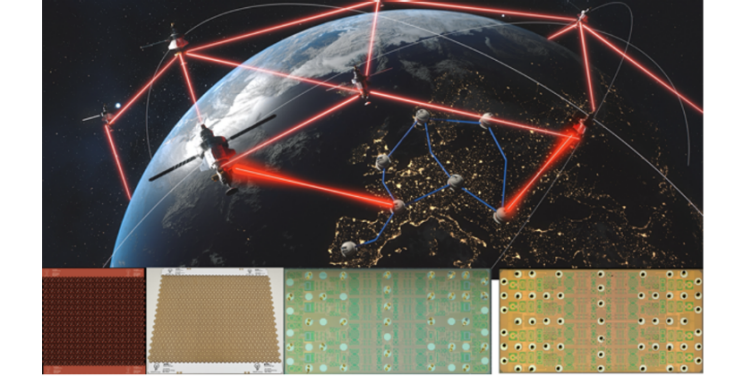
The SwissChips project funded by the State Secretariat for Education Research and Innovation (SERI) is a collaboration between ETHZ, EPFL and CSEM with several industry partners and stakeholders. The SwissChips project comprises eight technical work packages (WPs), which have been defined based on the key EU R&D programs where participation of Swiss researchers is jeopardized. The IEF takes part in this project specifically for 2 works packages: Space Electronics and Photonics, and Devices and Sensors.
This work was supported by the Swiss State Secretariat for Education, Research, and Innovation (SERI) through the SwissChips research project.
Project Coordinator: Prof. Dr. Christoph Studer
IEF responsible: Loic Chérix, ETH Zurich
Project number: 23.SWISSCHIPS.001
Reference Number: REF-1131-52303
WP4: Space Electronics and Photonics (Lead: Prof. Dr. Hua Wang)
WP8: Devices and Sensors (Lead: Prof. Dr. Mathieu Luisier)
Topic: Space Electronics and Photonics
Timeframe: 02/2024 – 01/2027
The Adrian Weiss Stiftung / ETH Grant: Electronic-Plasmonic Chips
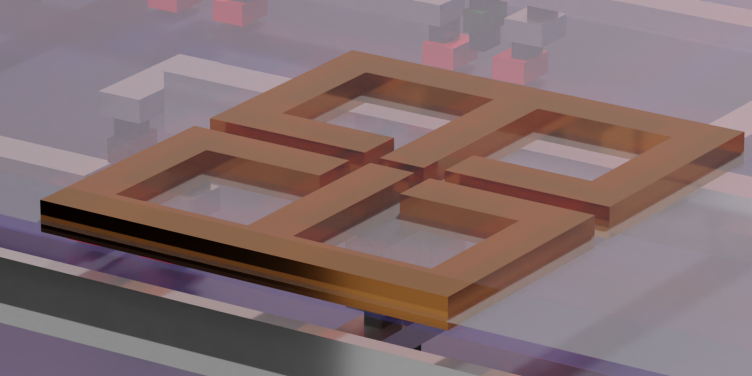
The Electronic-Plasmonic Chip project aims to unlock higher frequency bands for next generation 6G mobile communication, focusing on the lower latency, higher data capacity and a more efficient network. The goal of this project is to advance an optical electrical integrated platform and demonstrate its capability by establishing a 6G Fiber over Radio link with highly improved data rate and range. The project will focus on optical to electrical converters. To unlock larger bandwidths the project will need to work on co-designs for electrical, RF, optical and plasmonic devices to ensure a low loss, low noise and low distortion propagation and conversion (from electrical to optical and vice versa).
ETH coordinators: Prof. Dr. Juerg Leuthold and Prof. Dr. Hua Wang, ETH Zurich
ETH responsible: Loic Chérix, ETH Zurich
Project number: 22-2 ETH-037 (ETH Grant)
Topic: Communication Infrastructure Technologies and Devices
Timeframe: 03/2023 – 02/2026
EU Project: ECO-eNET - Efficient Confluent Edge Networks
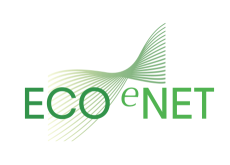
The ECO-eNET project will perform foundational research on emerging transmission technologies, to form a new confluent edge network that brings together optical and radio transport to scale to new levels of efficiency and capacity for 6G, by integrating confluent front-/mid-/back-haul (xhaul) with cell-free and distributed multiple-input multiple-output based access networks. The combination of photonic radio fixed wireless and free space optical transmission is used for fixed wireless connections, enabling the creation of an edge mesh network. New monitoring and slice-aware control protocols will unify the radio intelligent controllers with the transport software defined networking to efficiently deliver high-capacity flex grid wavelength multiplexed signals over standard single mode fibre and the fixed wireless links. Radio signals can be flexibly processed at different split phy points throughout the network or remain in analog radio over fibre format end-to-end.
The unique ECO-eNET combination of wired and wireless transport is further exploited for wireless control of the wired network segments, enhanced clock synchronization, and optical space and wavelength switching, groomed over FlexE ethernet. AI layer controls are added to orchestrate the federation of edge processing and splitting of AI models for optimum efficiency in executing user applications and smart network control functions. The ECO-eNET project brings together an interdisciplinary team of industry and academic partners to explore the full potential of these important emerging technologies to support the capacity, ultra-high energy efficiency, low latency, and robustness needed in 6G networks.
ETH coordinator: Prof. Dr. Juerg Leuthold, ETH Zurich
ETH responsible: Jasmin Smajic, ETH Zurich
Coordinator: Prof. Dr. Paolo Monti, Chalmers University of Technology, Sweden
Project number: 101139133, HORIZON.2.4 - Digital, Industry and Space
Topic: Communication Infrastructure Technologies and Devices
Timeframe: 01/2024 – 12/2026
EU Project: PROTEUS-6G - Programmable Reconfigurable Optical Transport for Efficiently offering Unconstrained Services in 6G

PROTEUS-6G focuses on the development of advanced packet-optical x-haul networking infrastructure, relying on novel software-programmable photonic-integrated-circuit based subsystems operated under an intelligent software management system, capable of simplifying and optimizing network operations and supporting future ultra-high capacity, low-latency and energy-efficient 6G cellular and cell-free MIMO radio access networks.
The targeted innovations will enable efficient utilisation of packet and optical resources (spectral subcarriers and spatial lanes), realizing the vision of flexible functional splits (FFSs), adapting the fronthaul, under dynamically customizable operational conditions, to the network demands, for varying distribution of users, traffic demands and use-cases.
To implement the 6G optical-enabled radio-access network, the consortium will develop ultra-low energy (low-pJ/bit), ultra-high capacity (0.8 Tb/s) and fast-reconfigurable (sub-ms) software-programmable solutions (i.e. transceivers, multiplexers and fast optical switches integrating tuneable lasers/filters) based on novel photonic processing/switching schemes, to be reconfigured by an intelligent control plane optimizing the utilization of resources across the front-/mid-/back-haul continuum and reducing unnecessary opto-electronic transitions, thus collectively improving performance while minimizing the environmental impact.
The PROTEUS-6G consortium covers the entire value-chain of industry/academia organizations focusing on implementing wireless-optical connectivity solutions. The participating experts possess demonstrated expertise re delivering on their promises as indicated by their research track record and exploitation activities towards commercialization of new products and contributions to standards. Their collective development of the targeted innovations is going to reenforce the European leadership in 6G networks thus paving the way for prosperity of Europe’s economy and society.
Project Website
ETH coordinator: Prof. Dr. Juerg Leuthold, ETH Zurich
ETH responsible: Dr. David Moor, ETH Zurich
Coordinator: Prof. Dr. Ioannis Tomkos, University of Patras, Greece
Project number: 101139134, HORIZON.2.4 - Digital, Industry and Space
Topic: Communication Infrastructure Technologies and Devices
Timeframe: 01/2024 – 12/2026
SNF Project: e-Retina – Enhanced Vision Restoration for Blind People
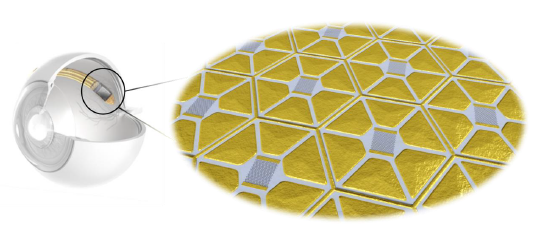
The e-Retina project is a three-year interdisciplinary project, in which the two project partners ETH Zurich and University of Tübingen are synergizing advanced optoelectronic and neuro-biological solutions towards a new retinal implant type. Such an implant restores vision for people that suffer from diseases leading to retinal degeneration and thus blindness. The new technology being developed will provide artificial vision with unprecedented spatial and temporal resolution, making it suitable for everyday visual tasks. More precisely, within the course of this project a modular platform will be built, consisting of a highly sensitive photodetector array and a high-density stimulation electrode array, along with specialized interfaces for image translation and stimulation generation. This platform will serve as the basis for the next generation of retinal implants, allowing for benchmarking and further advancements in the field.
external page Project Website
ETH coordinator: Prof. Dr. Juerg Leuthold, ETH Zurich
ETH responsible: Marina Homs, ETH Zurich
Project number: 219619, Projekte MINT 2023 April
Topic: Microelectronics. Optoelectronics, Electrical Engineering
Timeframe: 01/2024 – 12/2026
SNF Project: Nonlinear Pockels Materials for Nanoscale Devices
The goal of NoMaD is to introduce new Pockels effect materials with a large nonlinear coefficient that offer compatibility and ease of integration with CMOS material processing, Background: Nonlinear Pockels-effect materials are key to many new developments in telecommunications and sensing. They provide a large spectrum of applications from ultra-fast modulation for telecommunications to RF-filters and piezoelectric sensors. The ideal Pockels-effect material should offer a large nonlinear coefficient beyond 100 GHz, offer low power consumption and enable a low footprint. Further, it should offer stable operation across a wide temperature range and most importantly be easily integratable with CMOS. Currently deployed CMOS integrated solutions with an electro-optical effect rely on the plasma-dispersion effect of silicon. Unfortunately, the bandwidth of this effect (typically <60 GHz) is fundamentally limited by the mobility and density of the electrons. Also, the high density of electrons comes at the price of higher losses and even worse, the simultaneous modulation of phase and amplitude, renders more sophisticated light modulation techniques impossible. Another solution for bringing the electro-optical effect to CMOS relies on bonding Lithium Niobate (LiNbO3; LNO) to silicon wafers. LNO is currently the most deployed nonlinear Pockels material in industry and research alike. Yet, its small nonlinear strength limits its use to devices with lengths in the order of millimetres. Further, the large footprint of LNO devices limits the density of devices and contributes to the energy consumption. In this project, novel readily-integrable nonlinear materials for electro-optic devices will be developed. The new materials to be developped in this project will be integrated in plasmonic modulators and tested against known Pockels-materials. The importance of the project is in making the materials much more accessible to a wide variety of platforms. In a wide picture the project will lay a material foundation for the further development of new high-speed, energy efficient and thermally stable electro-optic (EO) devices.
external page Project Website
ETH coordinator: Prof. Dr. Juerg Leuthold, ETH Zurich
ETH responsible: Killian Keller, ETH Zurich
Project number: 208094, Project funding in Mathematics, Natural sciences and Engineering (division II) 2021 October
Topic: Pockels-effect, Optical switches, Linear electro-optical effect
Timeframe: 09/2022 – 08/2026
EU Project: Agile uLtra Low EnerGy secuRe netwOrks (ALLEGRO)
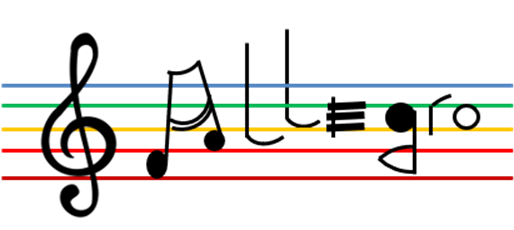
ALLEGRO aims at designing and validating a novel end-to-end sliceable, reliable, and secure architecture for next-generation optical networks, achieving high transmission/switching capacity -- with 10 Tb/s for optoelectronic devices and 1 Pbt/s for optical fiber systems --; low power consumption/cost -- with > 25% savings -- and secure infrastructures and data transfers. The architecture relies on key enabling innovations: i) smart, coherent transceivers exploiting multi-band & multi-fiber technologies for P2P and P2MP applications, based on e.g. high-speed plasmonic modulators/photodetectors and programmable silicon photonic integrated waveguide meshes; ii) loss-less, energy-efficient transparent photonic integrated optical switches, eliminating OEO conversions, e.g. with on-chip amplification in the O-band for datacom applications; iii) a consistent approach to security, in terms of functional/protocol architectures and communications, further improving QKD systems, enabling optical channel co-existence and researching on quantum-resistant (post-quantum) cryptography, developing systems based on physically unclonable functions; and iv) a scalable AI/ML assisted control and orchestration system, responsible for autonomous networking, dynamic and constrained service provisioning, function placement and resource allocation, leveraging devices increasing programmability and overall network softwarization.
ETH coordinator: Prof. Dr. Juerg Leuthold, ETH Zurich
ETH responsible: Dr. Ueli Koch, ETH Zurich
Coordinator: Dr. Tolga Tekin, Fraunhofer Institute for Reliability and Microintegration (IZM)
Project number: 101092766, HORIZON-CL4-2022-DIGITAL-EMERGING-01-39
Topic: Ultra low energy and secure networks
Timeframe: 01/2023 – 06/2026
EU Project: Flexibly Scalable Energy Efficient Networking (FLEX-SCALE)

FLEX-SCALE advances disruptive research on complementary optical x-haul network technologies for Optical Switching Nodes and their Transceiver Interfaces that enable flexible capacity scaling (≥10 Tb/s rate per interface, ≥1 Pb/s capacity per link and ≥10 Pb/s throughput per optical node) based on utilization of ultra-high bandwidth photonic/plasmonic technologies and the efficient exploitation of optical spatial and spectral switching (UltraWide-Band Spectral & Spatial Lanes Multiplexing; UWB/SDM). The developed x-haul 6G optical network innovations will achieve record energy efficiency (sub-pJ per switched/transmitted bit ) and low cost, enabled by photonic integration and optical transparency, replacing/bypassing power-hungry and costly electronic processing systems (e.g. electronic routers/switches). The Optical Nodes and their Transceiver Interfaces will be controlled by ML-enabled SDN control plane approaches that incorporate new resource allocation algorithms and protocols relying on emerging information models and enabling autonomous programmable disaggregated open networks, which will optimize traffic flow routing across network layers and segments, improving network QoS (high rates, low latency, high reliability/availability) and low cost/power consumption, as required by 6G specifications.
ETH coordinator: Prof. Dr. Juerg Leuthold, ETH Zurich
ETH responsible: Daniel Rieben, ETH Zurich
Coordinator: Prof. Dr. Ioannis Tomkos, University of Patras
Project number: 101096909, HORIZON-JU-SNS-2022-STREAM-B-01-03
Topic: Communication Infrastructure Technologies and Devices
Timeframe: 01/2023 – 12/2025
InnoSuisse Project: Photonics Sensor Processing Unit (PSPU)
The Photonics Sensor Processing Unit (PSPU) is a three-year long InnoSuisse funded project aiming at developing a miniaturized integrated interrogator for temperature and strain measurement. Today, fiber optics sensors containing fiber Bragg gratings (FBG) are used for civil infrastructure monitoring, in energy and oil/gas applications. Considering its advantages in immunity to electromagnetic interference, small size, high sensitivity and multiplexing capabilities, FBG sensors are a reasonable alternative to current sensor technologies. In this research project, a novel interrogation system for FBG sensors called Photonics Sensor Processing Unit (PSPU) will be developed. It will allow temperature and strain measurements at much lower costs and on much smaller footprint than currently available thanks to the use of a photonic integrated circuit (PIC) in combination with control and evaluation electronics.
Technical manager: Prof. Dr. Juerg Leuthold, ETH Zurich
Project manager: Kiran Menachery, ETH Zurich
Partners: Xenlux AG, FHNW – Fachhochschule Nordwestschweiz
Project number: 100.340 IP-ENG
Timeframe: 03/2022 – 08/2025
InnoSuisse Project: Ultra-Miniature Wideband 5G & 6G Electromagnetic Radiation Sensor (5&6-GEARS)
The 5&6-GEARS is a three-year long InnoSuisse funded project. A new generation of electromagnetic field detectors for the next generation of 5G and 6G mobile communication systems is aimed. The proposed system relies on ultra-miniature plasmonic sensors that enable field detection up to frequencies of 300 GHz, so far unaccomplished by mobile communications.
The 5G & 6G mobile communication standard will unleash a whole new level of capabilities with data processing speeds up to 100 times faster than 4G. To guarantee compliance of the new systems with regulations, precise measurement instruments are required to measure the fields in these communication links for monitoring, as well as electromagnetic compatibility and safety. Two kinds of measurement instruments are required: 1st a near-field measurement system that allows to scan the radiation in close vicinity of electronic devices for compliance testing with international regulations for body worn and general mobile devices; and 2nd a portable far-field measurement system to verify compliance with safety limits in-situ. Detecting such extremely high frequencies is a big challenge and presently lacks measurement systems. In this project, we will develop these new measurement systems supporting future wireless communication systems by covering frequencies from 10 GHz to 300 GHz.
Project Website (internal)
Project manager: Dr. Jasmin Smajic, ETH Zurich
Partners: SPEAG, Fields at Work GmbH, ETH Zurich
Project number: 53099.1 IP-ICT
Timeframe: 12/2021 – 12/2024
EMPIR Project: Microwave metrology for superconducting quantum circuits (SuperQuant)
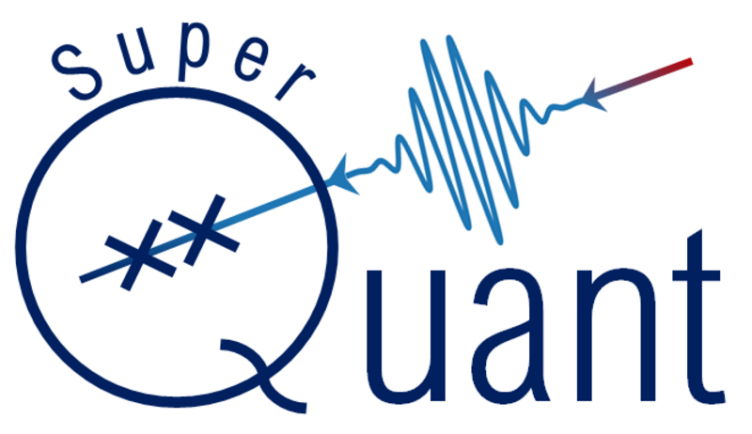
SuperQuant is a three-year long EU-funded EMPIR research project aiming to develop fundamental microwave metrology at cryogenic temperatures. Todays quantum computing technologies heavily rely on operation at cryogenic temperatures of a few kelvins or even down to a few millikelvin. As the quantum technology research and industry is booming, the need for efficient signal generation, microwave components, and their exact calibration is quickly rising. However, accurate signal generation and metrology in a cryogenic environment are currently almost non-existent. SuperQuant aims to solve this issue by establishing a cryogenic microwave toolset based on arbitrary waveform generation, an in-situ sampling oscilloscope, S-parameter measurement techniques, and quantum sensors for power measurements. The results from SuperQuant will help the metrology community to further advance the quantum computing technology.
external page Project Website
ETH coordinator: Prof. Dr. Juerg Leuthold, ETH Zurich
ETH responsible: Stefan Köpfli, ETH Zurich
Coordinator: Mark Bieler, Physikalisch-Technische Bundesanstalt (PTB), Germany
Project number: SRT-f16, EMPIR Call 2020
Topic: EMPIR Call 2020 – Fundamental, Industry and Normative
Timeframe: 09/2021 – 09/2024
CHART Project: Sustainable and Consistent Integrated Modelling of Superconducting Magnets (MagNum)
The MagNum project brings advanced techniques to multi-model and multi-scale numerical design of future superconducting high-field low and high-temperature superconducting magnets. We enhance the existing design methods with Model-Based System Engineering (MBSE) guidelines. A design process is divided into separate tasks. An individual design task is encapsulated in an interactive Jupyter notebook. Each notebook is based on a parametric input serving as a “single source of truth” for a magnet design version. Once a notebook is executed, it is persisted as a report to ensure design reproducibility and traceability. A design workflow constitutes concatenations of design steps, where the output of one step serves as input in the next, e.g., to perform multi-physics, multi-objective design optimization. Workflows are auto-executed regularly and in case of design changes to ensure their unbroken consistency. We propose to make innovative use of widely available infrastructure for software development (e.g., GitLab, Docker).
Download Project Summary (PDF, 139 KB)
Project manager: Dr. Michal Maciejewski, ETH Zurich
Coordinator: Dr. Jasmin Smajic, ETH Zurich
Timeframe: 04/2021 – 04/2023
EU Project: attojoule Cryogenic Communication (aCryComm)
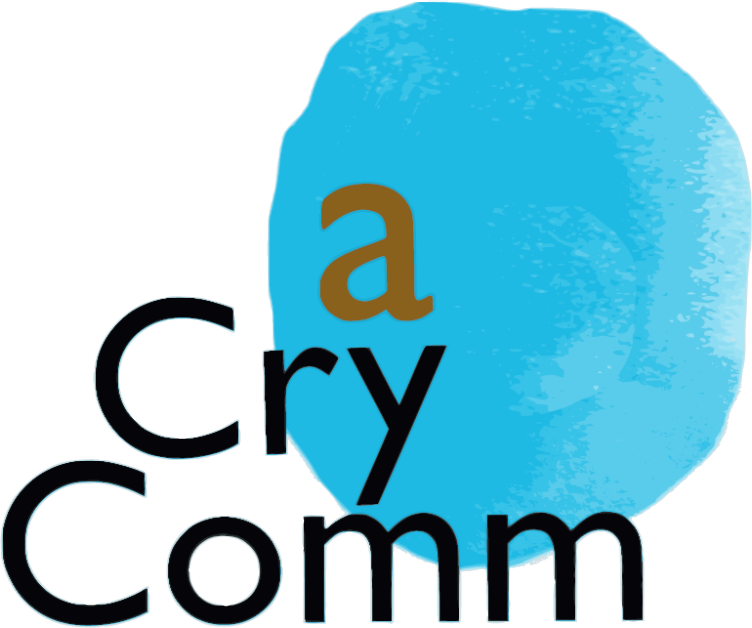
aCryComm is a three-year long EU-funded H2020 research project. The aim of the project is the development of building blocks for cryogenic photonic interconnects to tackle the problem of the data transfer to cryogenic environments. Many emerging and envisaged cryogenic processors such as quantum computers, require massive amounts of data transferred from the room temperature domain to the cryogenic environment. This increased demand requires more and more electrical connections into a cryostat. However, these connections carry also thermal energy into the cryostat which in turn requires more and more cooling power. Replacing these connections via optical links would tackle the bottleneck of data transfer from and to the cryogenic environment. For this, novel and high speed opto-electronics operating at cryogenic temperatures and the interconnection to cryogenic supercomputers will be investigated within aCryComm.
external page Project Website
ETH coordinator: Prof. Dr. Juerg Leuthold, ETH Zurich
ETH responsible: Stefan Köpfli, ETH Zurich
Coordinator: Dr. Matteo Cherchi, VTT Technical Research Centre of Finland
Project number: 899558, H2020-FETOPEN-2018-2020
Topic: FETOPEN-01-2018-2019-2020 - FET-Open Challenging Current Thinking
Timeframe: 10/2020 – 09/2023
Hector Fellow Academy Project: RetinaSensor
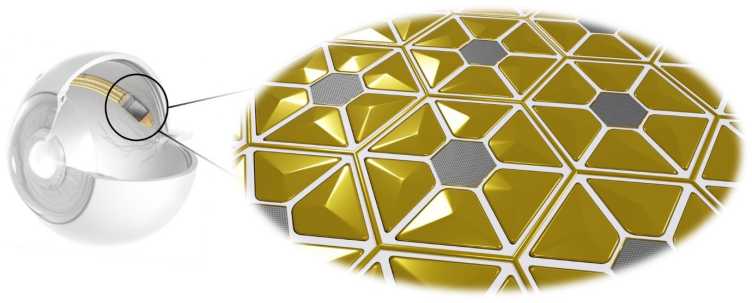
RetinaSensor is a 3-years interdisciplinary Hector Fellow Academy (HFA) project with the aim of advancing the retinal implant technology for enhanced vision restoration in blind people. Being the only available treatment for blindness due to retinal degeneration, current retinal implants are not yet suitable for daily tasks and provide insufficient restoration of vision. In collaboration with the Institute for Ophthalmic Research at the University of Tübingen the RetinaSensor project shall overcome previous limitations and provide unprecedent spatial and temporal resolution in subretinal implants. The RetinaSensor will incorporate a highly sensitive photosensor array based on van-der-Waals heterostructure providing a high dynamic range for an ideal image capture of the surrounding environment under various light conditions. Coupled to an electrode array at a previously unachieved spatial resolution and combined with a novel stimulation paradigm for a high temporal resolution, the RetinaSensor will bring blind people a step closer to regaining their sight.
external page Project Website
Partners: Prof. Dr. Eberhart Zrenner, University of Tübingen
Prof. Dr. Juerg Leuthold, ETH Zurich
Project manager: Dr. Wadood Haq, University of Tübingen
Shadi Nashashibi, ETH Zurich
Funding Agency: Interdisciplinary Hector Fellow Academy (HFA) Program, Karlsruhe, Germany
Timeframe: 10/2020 – 09/2023
EU Project: Neuro-augmented 112Gbaud CMOS plasmonic transceiver platform for Intra- and Inter-DCI applications (NEBULA)

NEBULA is a three-year long EU-funded H2020 research project. The aim is the development of a disruptive future-proof transceiver technology with astronomical data rates and energy efficiency. The need for such a new technology is evident when observing the exponentially expanding data access and usage since the 1970s. Now, the technology providers and manufacturers start to struggle keeping pace with this development. Systems become more outdated or incompatible. This is where NEBULA enters, with the goal to provide the foundations for a common transceiver technology platform. The combination of the ultra-high bandwidth capabilities of CMOS compatible Plasmonic modulator, together with functional digital processing portfolio of neuromorphic optical reservoir computing engines, could paint the landscape of the next-coming technology for transceivers. NEBULA targets to demonstrate, first, a fully functional 8-channel 112Gbaud 16QAM C-band transceiver prototype on a SiN platform. The aggregate capacity of the array is targeted at 3.2Tbps with an energy savings of 93% in comparison to currently used 200Gbps and 19W-consuming pluggable optics. This means, that NEBULA expects to achieve just 2.65W energy consumption per single 400Gbps wavelength. This would lead to an astonishing 6.625pJ/bit. Secondly, NEBULA aims to demonstrate a fully-functional sub-Volt 8-channel 112Gbaud PAM4 O-band transmitter on SiN co-packaged with a data generating ASIC from Mellanox. This would offer an aggregate capacity of 1.6Tbps with up to 37% energy savings compared to the estimated power requirements of respective Si-photonic-based co-packaged solutions.
ETH coordinator: Prof. Dr. Juerg Leuthold, ETH Zurich
ETH responsible: Dr. Ueli Koch, ETH Zurich
Coordinator: Prof. Dr. Konstantinos Vyrsokinos, Aristotle University of Thessaloniki
Project number: 871658, H2020-ICT-2019-2
Topic: ICT-05-2019 - Application driven Photonics components
Timeframe: 01/2020 – 09/2023
EU Project: Energy- and Size-efficient Ultra-fast Plasmonic Circuits for Neuromorphic Computing Architectures (PlasmoniAC)

PlasmoniAC is a 3-year long H2020 research project aiming to release a whole new class of energy- and size-efficient feed-forward and recurrent artificial plasmonic neurons with up to 100 GHz clock frequencies and 1 and 6 orders of magnitude better energy- and footprint-efficiencies, comparing to the current electronics-based state-of-the art. It adopts the best-in-class material and technology platforms for optimizing computational power, size and energy at every of its constituent functions, harnessing the proven high-bandwidth and low-loss credentials of photonic interconnects together with the nm-size memory function of memristor nanoelectronics, bridging them by introducing plasmonics as the ideal technology for offering photonic-level bandwidths and electronic-level footprint computations within ultra-low energy consumption envelopes. In a holistic hardware/software co-design approach, PlasmoniAC will follow the path from technology development to addressing real application needs by developing a new set of DL training models and algorithms and embedding its new technology into ready-to-use software libraries.
ETH coordinator: Prof. Dr. Juerg Leuthold, ETH Zurich
ETH responsible: Dr. Ueli Koch, ETH Zurich
Coordinator: Prof. Dr. Nikos Pleros, Aristotle University of Thessaloniki
Project number: 871391, H2020-ICT-2019-2
Topic: ICT-06-2019 - Unconventional Nanoelectronics
Timeframe: 01/2020 – 09/2023
Center for Single Atom Electronics and Photonics
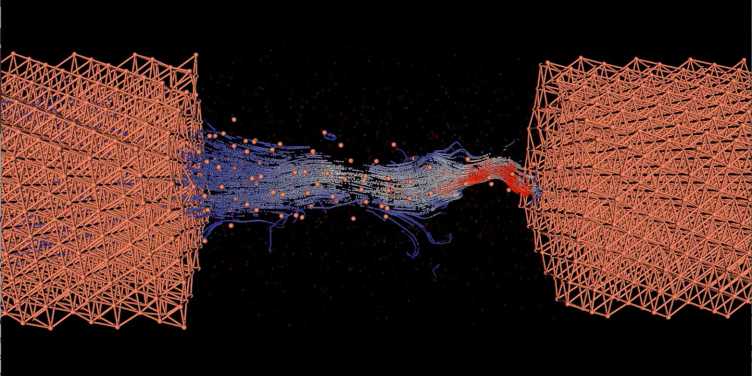
The Center for Single Atom Electronics and Photonics will pursue a new approach for the realization of integrated circuits. As a first step ETH and KIT will develop new atomic scale opto-electronic blocks for logic and memories. In a second step, a new generation of simple circuit will be realized by integrating the aforementioned building blocks. A reduction of size by a factor of 100 and energy savings in the order of 1000 compared to establish CMOS devices will be demonstrated.
Director: Prof. Dr. Juerg Leuthold, ETH Zurich
Co-directors: Prof. Dr. Mathieu Luisier, ETH Zurich
Prof. Dr. Thomas Schimmel, Karlsruhe Institute of Technology (KIT)
Coordinators: Dr. Alexandros Emboras, ETH Zurich
Dr. Ueli Koch, ETH Zurich
Timeframe: 01/2018 – 12/2025